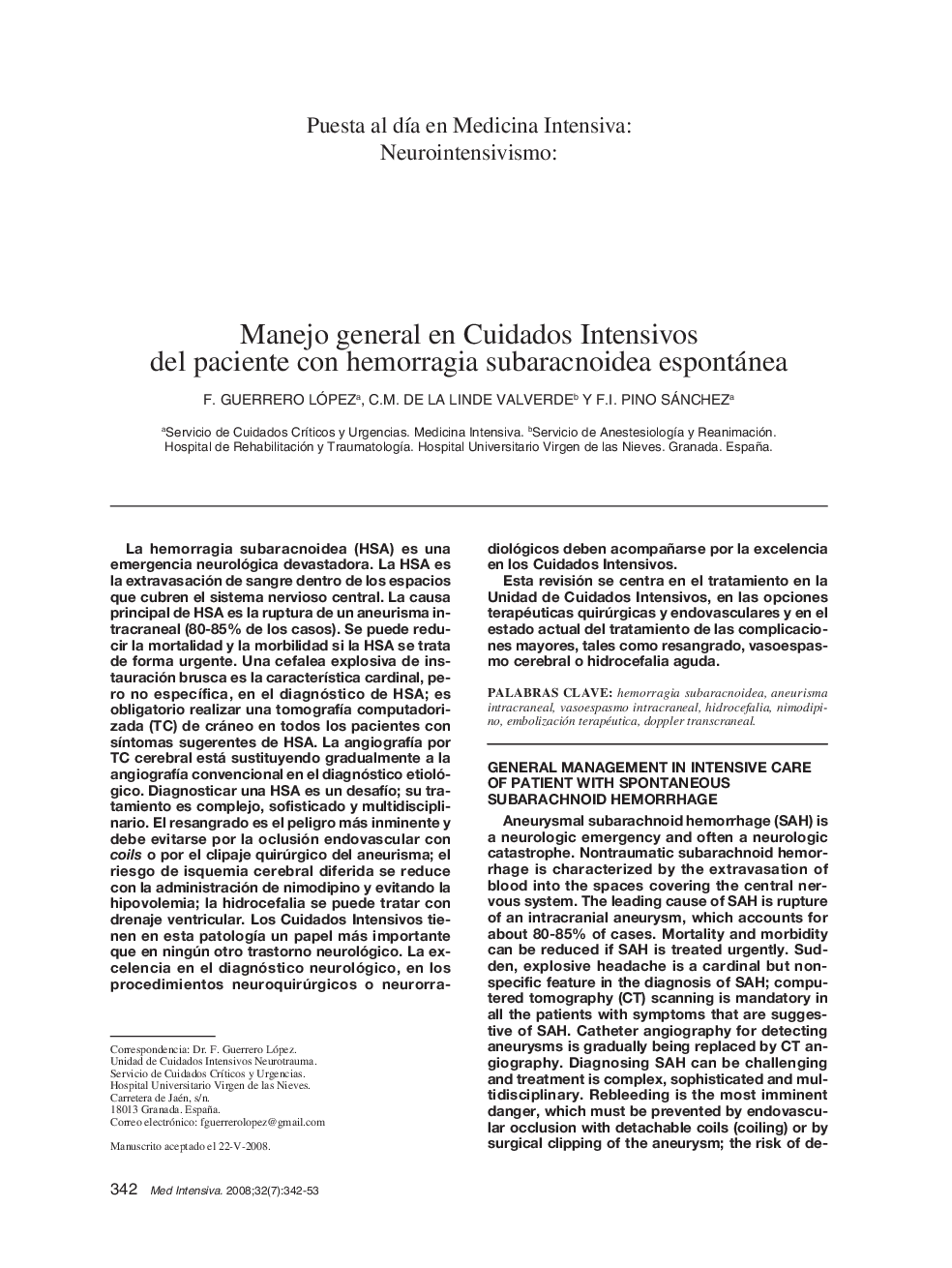| Article ID | Journal | Published Year | Pages | File Type |
|---|---|---|---|---|
| 3113818 | Medicina Intensiva | 2008 | 12 Pages |
La hemorragia subaracnoidea (HSA) es una emergencia neurológica devastadora. La HSA es la extravasación de sangre dentro de los espacios que cubren el sistema nervioso central. La causa principal de HSA es la ruptura de un aneurisma intracraneal (80-85% de los casos). Se puede reducir la mortalidad y la morbilidad si la HSA se trata de forma urgente. Una cefalea explosiva de instauración brusca es la característica cardinal, pero no específica, en el diagnóstico de HSA; es obligatorio realizar una tomografía computadorizada (TC) de cráneo en todos los pacientes con síntomas sugerentes de HSA. La angiografía por TC cerebral está sustituyendo gradualmente a la angiografía convencional en el diagnóstico etiológico. Diagnosticar una HSA es un desafío; su tratamiento es complejo, sofisticado y multidisciplinario. El resangrado es el peligro más inminente y debe evitarse por la oclusión endovascular con coils o por el clipaje quirúrgico del aneurisma; el riesgo de isquemia cerebral diferida se reduce con la administración de nimodipino y evitando la hipovolemia; la hidrocefalia se puede tratar con drenaje ventricular. Los Cuidados Intensivos tienen en esta patología un papel más importante que en ningún otro trastorno neurológico. La excelencia en el diagnóstico neurológico, en los procedimientos neuroquirúrgicos o neurorradiológicos deben acompañarse por la excelencia en los Cuidados Intensivos.Esta revisión se centra en el tratamiento en la Unidad de Cuidados Intensivos, en las opciones terapéuticas quirúrgicas y endovasculares y en el estado actual del tratamiento de las complicaciones mayores, tales como resangrado, vasoespasmo cerebral o hidrocefalia aguda.
Aneurysmal subarachnoid hemorrhage (SAH) is a neurologic emergency and often a neurologic catastrophe. Nontraumatic subarachnoid hemorrhage is characterized by the extravasation of blood into the spaces covering the central nervous system. The leading cause of SAH is rupture of an intracranial aneurysm, which accounts for about 80-85% of cases. Mortality and morbidity can be reduced if SAH is treated urgently. Sudden, explosive headache is a cardinal but nonspecific feature in the diagnosis of SAH; computered tomography (CT) scanning is mandatory in all the patients with symptoms that are suggestive of SAH. Catheter angiography for detecting aneurysms is gradually being replaced by CT angiography. Diagnosing SAH can be challenging and treatment is complex, sophisticated and multidisciplinary. Rebleeding is the most imminent danger, which must be prevented by endovascular occlusion with detachable coils (coiling) or by surgical clipping of the aneurysm; the risk of delayed cerebral ischemia is reduced with nimodipine and avoiding hypovolemia; hydrocephalus can be treated by ventricular drainage. Intensive care plays a more important role in the management of SAH than in any other neurological disorder. Excellence in neurologic diagnosis, in operative neurosurgery or neuroradiologic procedures must be accompanied by excellence in Intensive Care.This review emphasizes treatment in the Intensive Care Unit, surgical and endovascular therapeutic options and the current state of treatment of major complications such as rebleeding, cerebral vasospasm and acute hydrocephalus.
